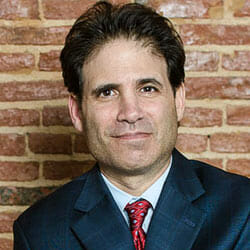Bedsores Can Be Evidence of Neglect and Abuse
 Pressure sores (also known as pressure ulcers and decubitus ulcers) are commonly called bedsores. They can be more serious than many people realize, because a pressure sore can become deeply infected, destroying tissue and causing death.
Pressure sores (also known as pressure ulcers and decubitus ulcers) are commonly called bedsores. They can be more serious than many people realize, because a pressure sore can become deeply infected, destroying tissue and causing death.
But pressure sores are not inevitable for invalids; they are often the result of shoddy, neglectful care. When a person receives proper medical attention and treatment, pressure sores can usually be avoided. Each year, about 2.5 million patients 75 and older suffer from at least one pressure sore. Some claim that the percentage of those who suffer from pressure sores is increasing. Dr. Barrett Larson, Leaf Healthcare’s chief medical officer, believes that “[w]e are facing a pressure ulcer epidemic. One out of every 30 hospitalized patients will develop a pressure ulcer in the United States. Annual treatment costs for hospital acquired pressure ulcers are over $9 billion.”
The truth is, we could give you bedsore numbers — such as how much it costs our health system to cure just one sore ($2,000 to $20,000), or how many people will die from pressure sores in a year (around 60,000) — but numbers are cold comfort if it is your loved one who is suffering from the effects of pressure sores or who may have died from such extreme neglect.
The Stages of Bedsores
Pressure sores have four stages, with Stage 4 being the most severe:
- Stage 1: The skin is not broken, but it may look red on those with lighter skin tones. Darker skin tones may appear discolored—grayish, bluish, or purplish. The area can be warmer or cooler than surrounding skin, and may be painful, tender, or itchy. A Stage 1 bedsore can heal promptly if the pressure source is relieved.
- Stage 2: The skin is broken and damaged. The area may appear to be filled with fluid, and the wound is shallow. Surrounding areas may be discolored. If the patient does not have health problems (such as diabetes) that slow down healing, Stage 2 sores can be healed quickly with antibiotic ointments and bandages, as long as the pressure’s source is removed.
- Stage 3: The sore now affects muscle tissue and has become much more difficult to heal. Stage 3 bedsores are deep wounds that may need surgery and IV antibiotics to heal them. They are extremely painful.
- Stage 4: Muscles, tendons, and even bones are permanently destroyed. Such deep bedsores are crater-like, with dead, discolored tissue. Stage 4 bedsores can turn gangrenous, are almost impossible to heal, and are often fatal.
Why Do Bedsores Happen?
Bedsores generally occur in those who are bedridden or in wheelchairs. Conditions that make bedsores more likely are fragile or thinner skin, less body fat to cushion skin that lies against bone, and skin that is too dry or too moist. Reduced blood flow to an area can also make pressure sores more liable to form. For these reasons, the elderly are often greatly at risk. Others at risk include persons with nerve injuries or neurological issues that give them limited ability to sense pain or discomfort, meaning they do not realize when something is wrong.
Three factors contribute to the formation of pressure sores:
- Constant pressure. Sustained pressure limits blood flow to an area, which deprives tissues of oxygen and nutrition. Without these essentials, skin and tissues become damaged. If the area is skin and tissue trapped between a bone and a surface, such as a bed, the pressure is greater and the risk of a bedsore is greater.
- When fragile skin rubs against bedding or clothing, it is more likely to be injured. This is especially true if the skin is moist.
- Shear means that two surfaces rub together in opposite directions — for instance, when a patient slides down in an elevated hospital bed. Skin over bone, such as in the tailbone area, gets pulled in the opposite direction and can be damaged.
Bedsores are a greater risk in areas below the waist. Places on the body where pressure sores are more likely to form include:
- Backs of heels
- Ankles
- Inner knees
- Backs of knees
- Buttocks
- Tailbone
- Hips
- Spine
- Backs of arms
- Elbows
- When oxygen tubing is used, on cheeks and near the ears.
Treating Bedsores
Job one when a bedsore occurs is to eliminate the pressure that caused it. Frequent repositioning, plus pressure-relieving devices such as specialized cushions and mattresses, can help.
Wounds must be cleaned and sometimes debrided (have dead tissue removed). Large or deep bedsores can require surgery. Sometimes vacuum-assisted closure (VAC) is used to suction wounds clean. Antibiotics, both topical and systemic—pills or IVs—are often needed, along with bandaging. Pain-relieving drugs, such as topical pain relievers and NSAIDs (ibuprofen and naproxen sodium), help the patient feel more comfortable. Finally, good nutrition is essential to helping the body heal itself quickly.
Pressure Sores are Avoidable and Preventable
The best way to cure a bedsore is never to let one start. That said, pressure sores can be prevented by:
- Frequent repositioning of the patient (every two hours in bed, and every 30 minutes in a wheelchair, at a minimum)
- Checking pressure areas daily
- “Tenting” bedclothing over toes, and using special heel pads
- Specialized mattresses, pillows, and cushions that are air-filled or gel-filled that can ease pressure points.
- Treating sores that do occur before they progress beyond Stage 1.
Lots of nutritious food, including colorful fruits and vegetables, also help the body stay healthy and heal faster when wounds happen.
In nursing homes, the recognized standard of care includes processes such as the Daily Skin Assessment, meant to catch pressure problems before they turn into sores, and the Wound Care Assessment, for bedsores and other wounds that are healing. When nursing staff follow the standard of care and perform these assessments appropriately and regularly, practically all bedsore problems can either be totally prevented or cured in an early stage. Not following the recognized standard of care puts patients at risk and can also be grounds for negligence claims.
An example of a case involving claims of nursing home negligence is that of a Virginia man who developed bedsores that required surgery while he was a patient in a Williamsburg nursing home during 2014. The man is seeking compensatory damages of $5 million and punitive damages of $2 million from the home and two other related limited-liability companies. The man claims that the staff demonstrated negligence by not preventing his bedsores and by not preventing harm from occurring to an incapacitated person. He also claims that the nursing home was in breach of contract because it did not provide him with the appropriate care that preserved his safety, health, and well-being.
If your loved one has bedsores, the nursing home may not be following the recognized standard of care and may therefore be guilty of negligence. If you are not receiving answers from the home that you can trust, you may want to seek legal assistance. Your loved one deserves to be treated humanely.
Let Down by the Eldercare Industry? Let “The Injury Lawyer” Help You.
When you place a loved one in a nursing home, you are entrusting their well-being and health to a staff that you hope is caring, competent and professional. Unfortunately, many elderly people suffer from various forms of abuse, including harm done by other residents that the staff overlooks or does nothing to prevent. Those in nursing homes can even be evicted without just cause, simply because they are too expensive or sick for the corporation running the nursing home. To resolve certain situations and obtain damages owed, you may need caring and compassionate legal assistance for your parent or other relative.
The law offices of Steven H. Heisler act on behalf of personal injury victims, including those harmed by nursing home injuries. Interested in more information on whether you have a valid nursing home injury or damages claim? Contact Baltimore nursing home abuse lawyer Steven H. Heisler today for a free initial consultation at 1-410-625-4878, or use our online contact form.

Attorney Steve Heisler
Steve Heisler decided in 1996 that he was going to focus his law practice exclusively on injury cases. Since then, he has been representing injured people against insurance companies, disreputable medical practitioners and Big Pharma, and doing it with compassion, honesty and level-headed rationality. [ Attorney Bio ]

